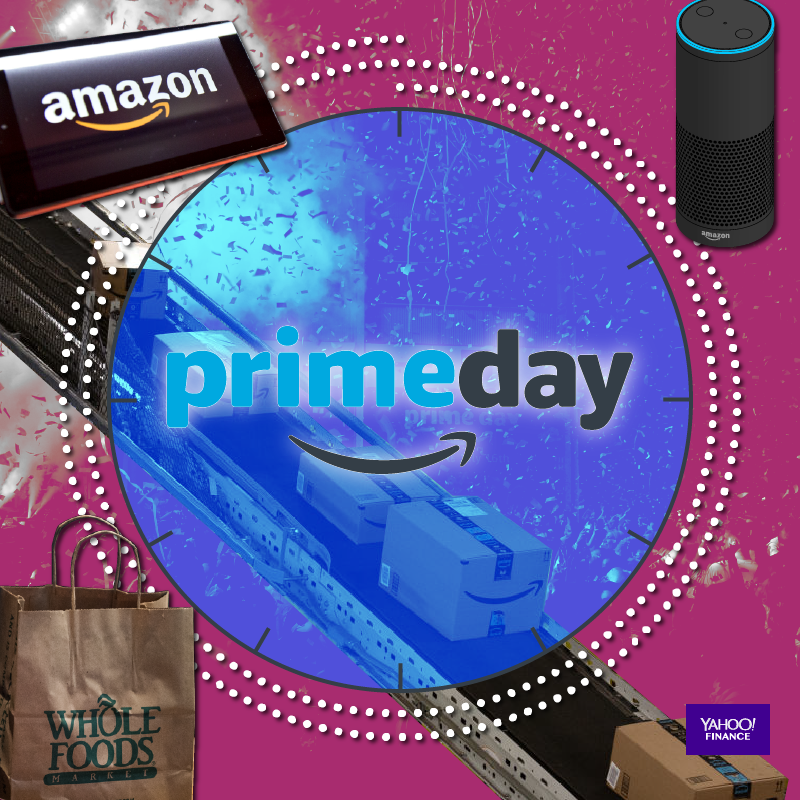How to tell if Amazon Prime is worth it
Amazon Prime currently costs $119 a year or $12.99 per month if you don’t want to commit — after a free month trial. (The yearly cost comes out to $9.92 per month.)
But is it worth it? For 100 million Prime members the answer is yes.
In May Amazon raised its Prime membership price by $20 to $119, which may have tweaked this calculation slightly, but it’s still easy to see whether it is worth getting’, or if you already subscribe, keeping it.
The biggest benefit of Prime is the included two-day shipping on countless items in Amazon’s catalog, which may even be one-day or same-day on certain goods. These days, free shipping has become table stakes for online retail, but not without certain caveats. Many retailers have required dollar minimums to qualify for free shipping.
Amazon, however, only has caveats on a small portion of its items, which it calls “add-on” items. To qualify for free shipping, an add-on item must be bought in an order of at least $35.

But if you need something faster than an economy “ground” speed, you may be stuck spending a significant amount more. A smattering of shipping policies of websites that Yahoo Finance surveyed found that upgrading from the free ground shipping typically costs well over $10.
So if you would want expedited shipping once a month — 12 per year — Amazon Prime has probably already paid off.
However, Amazon still offers free standard-speed shipping most of the time if you spend $25 or more, so it can pay to be patient.
The smaller benefits can add up
Another easy way to figure out if the membership cost is justified is whether you watch Prime video. This is Amazon’s streaming service that offers original content and a selection of movies and TV shows — including some premium TV from networks like HBO. Prime Video itself costs $8.99 a month, or $107 a year. If Amazon’s video content is enough of a draw, being a full Prime member only requires another $12 — which would pay for itself if you buy something where you need expedited shipping.
The company’s acquisition of Whole Foods last year has also resulted in savings for Prime members, something that could add more points to the pro column. If a Prime member spends $10 at Whole Foods between July 11 and 17, their Amazon account will be credited $10.
Other benefits include Amazon’s Prime Rewards Visa Signature card, which rewards heavy Amazon Prime members with 5% back in credit, a music streaming service, unlimited photo storage, exclusive deals, a Kindle library, access to certain Prime-member only brands, and more.
Using the 12 expedited orders per year as a benchmark, think about your potential usage (or current, if you’re evaluating whether to continue). If you consume video or want access to Emmy award-winning shows, like “The Marvelous Mrs. Maisel” or that Billy Bob Thornton show “Goliath,” that number of orders required to make Prime membership worthwhile kicks downward. If you’re a big Whole Foods customer, that number drops even lower. The more you use the Amazon ecosystem, the more likely membership makes sense. Which appears to be Amazon’s ultimate goal.
It can backfire, however, as Yahoo Finance learned in a recent survey. On Prime Day, many people were planning to spend over $100 without even knowing what would be on sale. If you’re buying more than you need because of #deals, they may not be deals after all.
Ethan Wolff-Mann is a senior writer at Yahoo Finance focusing on consumer issues, tech, and personal finance. Follow him on Twitter @ewolffmann.
A few tips and tools for shopping on Prime Day
Amazon Prime Day 2018: How to get the best tech deals
The Prime Day deals Amazon doesn’t want you to see
Inside the vicious battle to the top of the Amazon search rankings